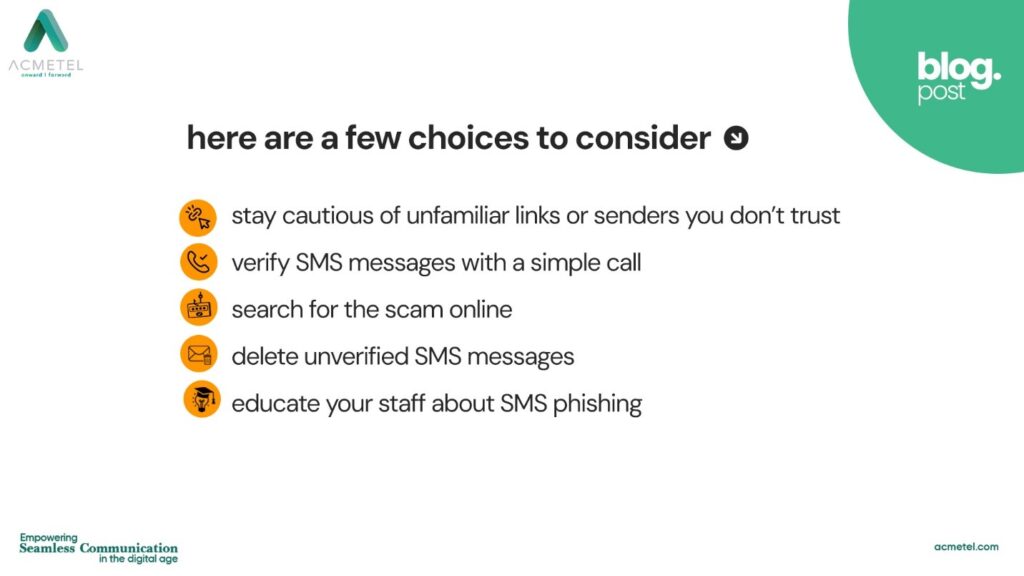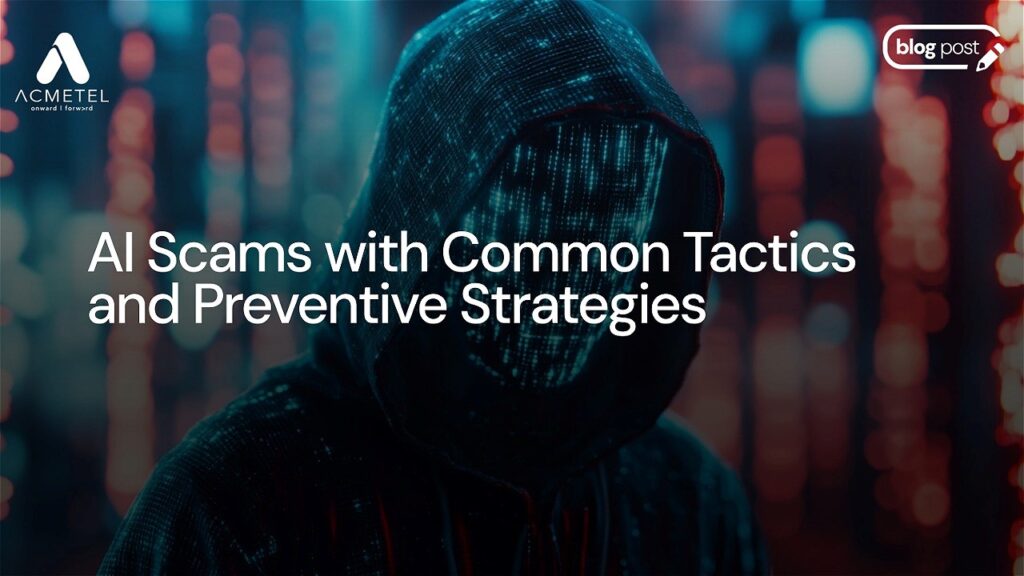SMS Phishing or Smishing can pose a double threat to businesses. Depending on the type of cyberattack involved, it can potentially harm your employees and your whole company.
Suppose a smishing attack contains a link that adds ransomware or malware to your company’s systems. In that case, attackers and scammers can access your employees’ contact information and other confidential data.
Scammers often create text messages from a familiar contact to trick you into divulging your sensitive personal information, which the scammers already possess. The scammers use your trust in those contacts to lure you into their trap.
Let’s see what steps you can take to defend against SMS Phishing. Here are a few choices to consider.

Stay cautious of unfamiliar links or senders you don’t trust
Sometimes, the best approach is to take no action. If you’re unfamiliar with the sender, it’s wise not to engage. Refrain from clicking on links or making impulsive decisions.
Verify SMS messages with a simple call.
If you receive an SMS from a legitimate sender but have doubts and aren’t sure how to verify its authenticity, contact the company or individual directly for verification.
Search for the scam online.
Some scams may contain specific phrases, words, or details unique enough for an online search. Especially for well-known scams, as scammers tend to stick to what works, you might discover blog posts and discussions revealing the true nature of that scam.
Therefore, if you can’t verify the message with the institution or company, consider using the information in the statement to conduct a web search.
Delete unverified SMS messages.
If you strongly suspect the text is a scam, simply delete the message. If it’s genuinely necessary and legitimate, you can trust that the company will contact you again.
Educate your staff about SMS phishing.
For companies, it’s important not to let employees face SMS Phishing alone. Take the initiative to set up training programs that teach them how to spot and handle suspicious messages.
Give special attention to the tricky smishing tactics that might seem to come from familiar business contacts or companies you’ve worked with before.
Encourage teams to report any SMS phishing attempts or security suspicions to the in-house security team. Remember that your organization’s first protection against smishing is shared vigilance and quick reporting.
Bringing It All Together!
In summary, SMS phishing isn’t just about text messages. It also undermines trust and security for individuals and businesses. To challenge this growing cyber threat, being proactive is the key. Training employees to identify and respond to smishing isn’t just defense; it’s a strategic requirement. Quick reporting and shared awareness protect against these sneaky yet potentially harmful attacks. In today’s digital age, protecting against smishing isn’t a choice; it’s a fundamental element of modern cyber security.








